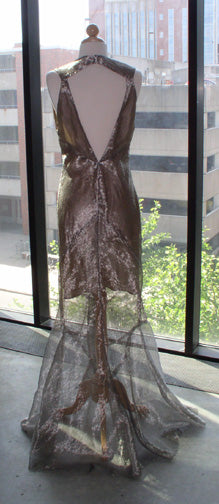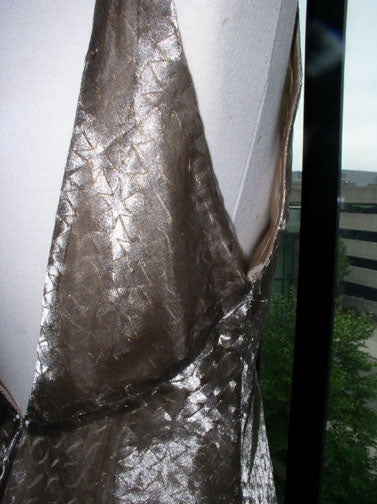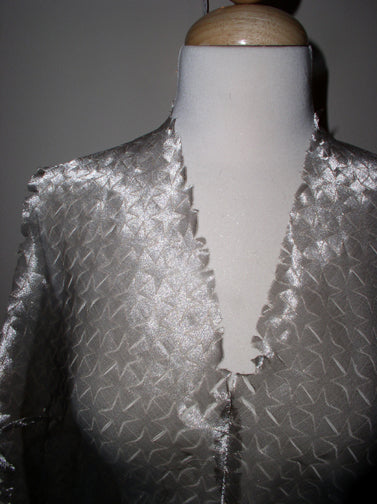I found a 1-2/3-yard piece of 36" wide circa 1950’s(?) 60's(?) Waverly interior fabric at a yard sale six years ago. Along its selvage is printed: 'A Waverly Bonded Glosheen'. It is a slightly polished, good grade of cotton and I sat on it, wondering how best to maximie it for whatever use I could eventually come up with.
A skirt! (I can keep sitting on it, yet have it use, ha!) To make the most use of it, I cut the piece in half and sewed the selvages as the side seams. I narrowly hemmed the bottom edge and folded a hem at the top nearly equivalent to the width of a waistband. I then fit at the top according to my waist measurement by creating box-pleats at the right and left sides of the front and back.
To get the skirt on and off, I left the back left box-pleat un-stitched and applied white hooks and eyes to each side of the box-pleat fold thus, making the waistband longer for me to get over the hips and yet close down with the hooks to fit at the waist.
Over timie, my daughter and I add Swarovski flatbacks here and there, plus a little hand embroidery to augment the French cafe print.
Makes for the Optimal Picnic Skirt-and is always a hit at every barbeque to which I wear it!
Front of the skirt:

Detail at the hooked box-pleat:



 When in motion, this laser-etched silk/metal organza rustles not unlike an array of delicately drying mulberry leaves the silk worm is fed to produce the filament eventually spun into silk.
When in motion, this laser-etched silk/metal organza rustles not unlike an array of delicately drying mulberry leaves the silk worm is fed to produce the filament eventually spun into silk.































 Once I have every yard of the metal silk I need for the entire project, I will cut it into the 24x36 inch panels and have about 10 goes with the laser cutter. Stay tuned!
Once I have every yard of the metal silk I need for the entire project, I will cut it into the 24x36 inch panels and have about 10 goes with the laser cutter. Stay tuned!









